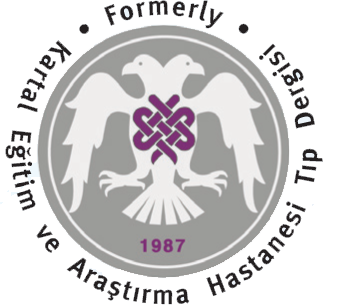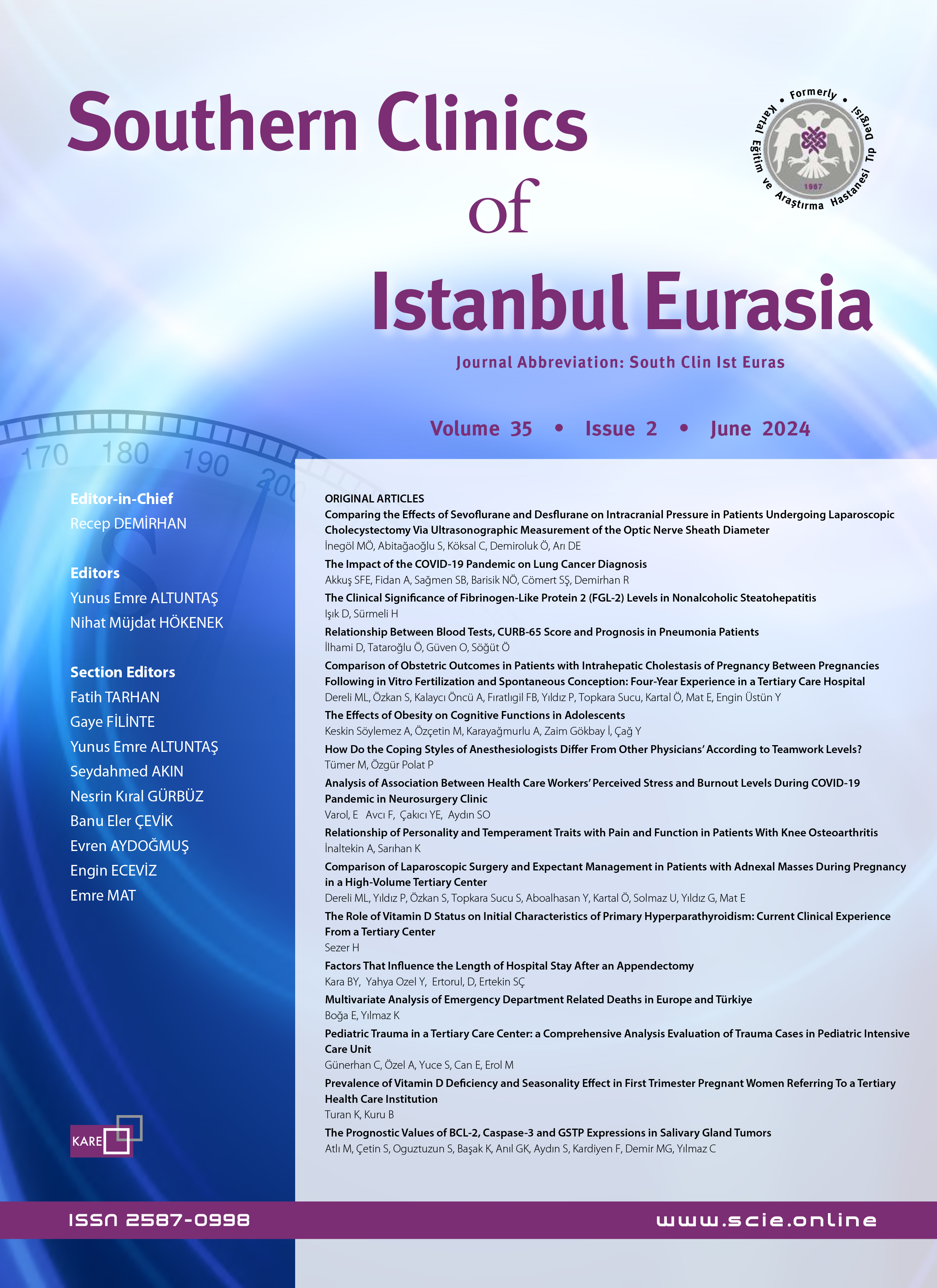Volume: 8 Issue: 2 - 1997
| RESEARCH ARTICLE | |
| 1. | THE EXAMINATION OF CLINICAL AND SUBCLINICAL HEARING DEFECTS WITH ABR IN DIABETIC PATIENTS Derya Berk, Önder Doğan, Mehmet Külekçi Pages 638 - 641 In this study we have utilized ABR audiometry to evaluate the functional integrity of hearing pathways in 40 diabetic patients. We have found significant increase in the absolute lateney of wave V and in the interpeak latency of I-V in diabetics. Increased ABR wave latencies have been found to be more pronounced in cases with diabetic complications. Of those cases with complications, separated into groups of Type I and Type II diabetics had a significant increase in wave V absolute latency. No significant increases in latencies have been found in association with therapeutic regimen or duration of the disease. |
| 2. | CLINICAL COURSE AND TREATMENT RESPONSE IN PATIENTS WITH NEPHROTIC SYNDROME Meral İnalhan, Betül Sümer, Lale Pulat Seren, Sevinç Akarçay, Tuğrul Sabuncu, Savaş İnan Pages 642 - 645 We retrospectively reviewed the clinical course and treatment response of 49 patients who had a diagnosis of nephrotic syndrome and were treated in the Elder Child Clinics of our hospital between 1993 and 1996. The ages of the patients ranged from one to 14 years. Of 49 patients 22 (44.8%) were girls, and 27 (55.2%) were boys. Forty-six patients (93.8%) and three patients (6.1%) had primary and secondary nephrotic syndrome, respectively. Of patients with primary nephrotic syndrome, 45 (98%) had minimal-lesion nephrotic syndrome (MLNS). Among patients with MLNS, 17 (37.7%) patients responded well to treatment and did not develop recurrences, whereas five (11.1%) had minimal and 13 (28.9%) had frequent recurrences; two patients (4.4%) had steroid-dependent and five patients (11.1%) had steroid-resistant MLNS. Three (6.6%) had recovered without any medical therapy. Three patients with secondary nephrotic syndrome had amyloid nephrosis (33.3%), lupus nephritis (33.3%), and hepatitis A nephritis (33.3%), respectively. The patient with lupus nephritis responded to high-dose steroid therapy. The remaining two patients with amyloid nephrosis and hepatitis A nephritis were administered angiotensin-converting enzyme inhibitör (ACEI) therapy. Proteinuria decreased in patients with lupus nephritis and hepatitis A nephritis. |
| 3. | THE EFFECT OF ANTIBIOTIC PROPHYLACSIS ON MORBIDITY IN CAESEREAN SECTION Kenan Sofuoğlu, Sadiye Eren, Mehmet Uludoğan, Yasemin Yakut, Tansel Çetinkaya Pages 646 - 648 In the recent years the rate of caeserean section has significantly increased. Wound infection, endometritis and urinary system infections are the most common causes of morbidity following caeserean section. As the number of risk factors increased, the incidence of infection can rise up to 85 percent. There have been many studies supporting the use of prophylactic antibiotics to prevent this infectious morbidity. In our hospital we have prospectively studied 78 patients who have had caeserean section due to various indications to compare the effect of I.V. ampicillin + sulbactam and cefazolin sodium on the infectious morbidity. The first group of patients was given 2 g I.V. ampicillin + sulbactam following the damping of the umbilical cord during the operation and the second group was given I.V. cefazolin sodium, 2 g following the damping of umbilical cord, 1 g at 6 and 12 hours postpartum. In many studies the necessity of prophylactic antibiotics was proven, for this reason a placebo group was not formed. In postoperative periods, the patients were followed for fever, uterine tenderness, foul smelling lochia, urinary infection, edema, hyperemia, induration and discharge at he site of incision and for the duration of hospitalization. Consequently both of antibiotics were found to be effective in preventing infectious morbidity. When the groups were compared with each other statistically significant difference was not detected (p>0.05). |



















